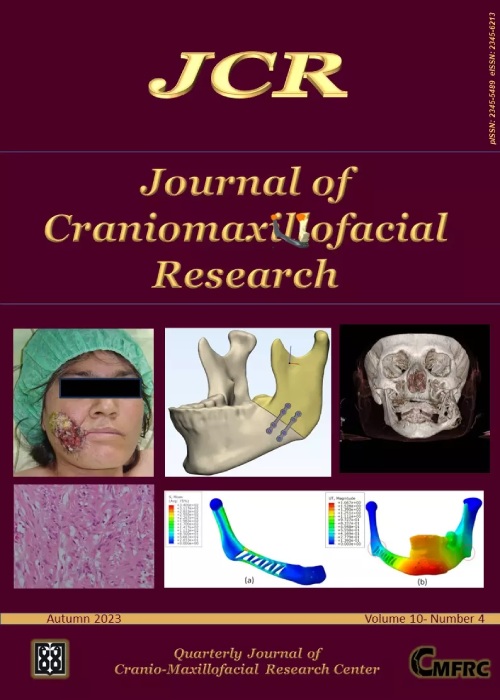The Evaluation the relationship between polymorphism of galactose mutarotase gene by creating jaw sound in patients with temporomandibular disorder (TMD)
Objective :
One of the concerns of dentists is the referral of patients with temporomandibular problems. Temporomandibular joint disorders (TMD) is a complex multifactorial clinical problem that involves masticatory muscles, temporomandibular joint and related structures. Thiscomplication is one of the three common chronic pains after headache and low back pain, which can manifest as pain in the temporomandibular region and limitation in joint movements, or even as clicking, crepitus, and popping sounds during temporomandibular joint movements. For the first time, the american association for oral pain (AAOP) proposed the role of genetic factors in the development of TMD. It is thought that a complex disorder such as TMD is multidimensional and can be subjected to environmental conditions as well as multiple gene polymorphisms. Identification of single nucleotide polymorphisms in the human genome can play an important role in clinical setting for diagnosis, prognosis and therapeutic interventions in various diseases including TMD. The aim of this study was to evaluate the relationship between polymorphism of galactose mutarotase gene by creating jaw sound in patients with temporomandibular disorder in a population with high similarity to the whole Iranian population and using the results in prevention and targeted treatment of affected patients.
Study Design:
101 patients with TMD using DC/TMD criteria among those referred to Tehran University School of Dentistry and 103 healthy subjects for TMD that have age and gender matched were selected to control groupfrom those referring to the Oral and Maxillofacial Diseases and Oral and Maxillofacial Pain departments. Blood samples were taken in 5cc and DNA extracted from the blood of both groups by applying the technique PCRARMS in terms of polymorphism rs4776783 in Galm gene were Compared.
Results:
101 patients with TMD along with 103 healthy individuals without a history of TMD were evaluated to investigate rs4776783 polymorphism in GALM gene. The average age of the patients was 35.92, and 21 were men and 80 were women. According to the questionnaire, 61 people felt the sound in their jaw while moving. On the other hand, according to the TMD/DC criterion, the number of people who have crepitus in the right and left jaws is equal. The average age of the patients was 35.92, and 21 were men and 80 were women. According to the questionnaire, 61 people felt the sound in their jaw while moving. On the other hand, according to the TMD/DC criterion, the number of people who have crepitus in the right and left jaws is equal. The low prevalence of crepitation with p=0.734 has a significant relationship with the genotype of people.
Conclusion:
This study showed that there is a significant relationship between the rs4776783 polymorphism in Galm gene and the occurrence of temporomandibular disorder (TMD), jaw sound and pain in many masticatory muscles such as lateral pterygoid and temporal. Therefore, it can be concluded that TMD has a genetic basis.
- حق عضویت دریافتی صرف حمایت از نشریات عضو و نگهداری، تکمیل و توسعه مگیران میشود.
- پرداخت حق اشتراک و دانلود مقالات اجازه بازنشر آن در سایر رسانههای چاپی و دیجیتال را به کاربر نمیدهد.


